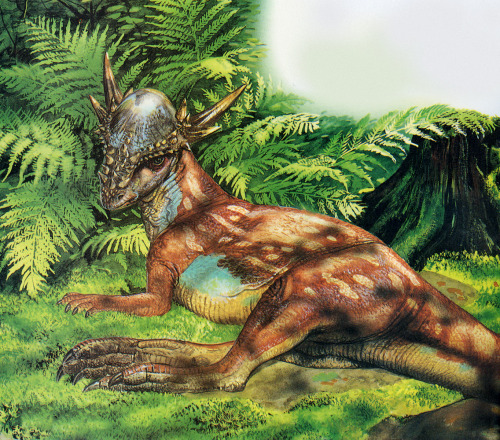 |
| Painting by Steve Kirk. |
A question I have often asked myself during my renewed interest in dinosaurs and paleontography is "what is a proper dinosaur resting posture?" I have seen many different artists portray dinosaur resting much like what you see in the Steve Kirk painting to the left, and
John Conway's sleeping tyrannosaur painting in the book "
All Yesterdays" - on their sides, lounging like lions, or in this case, like a tuckered-out kangaroo. But is this necessarily accurate? Could dinosaurs, in fact, lounge in this way?
I am skeptical of this -"lounging," as is depicted here, is something that I've found in my studies (admittedly limited in comparison to some of my readers) to be a distinctly mammalian trait. Crocodiles, birds, and squamates do not, in my experience, exhibit this kind of resting behavior where they lay upon their sides, with the majority of their weight upon their ribcage, hip, and tucked-under leg.
Birds have a variety of sleeping postures and habits ranging from snoozing standing up (sometimes on one leg!), to nesting with both legs folded up under the body, to perching - or, in the case of some hummingbird species, hanging upside-down like little, feathery bats. Their heads are either tucked behind the wing, or pulled into their bodies with their beaks resting on their chests.
Crocodiles and squamates "lounge" in a different fashion from birds, but still do not have the same kind of world-class lounging skills that a mammal, like a dog or cat, does. Both clades typically rest flat on their bellies, with legs splayed out to the sides, sometimes with their bodies looping around upon itself to conserve heat.
 |
| Photo removed at the request of the image distributor. |
I am curious as to what my readers think - based on the behaviors of these dinosaur kin and cousins, is it still possible that dinosaurs could still lounge in the fashion of leopards, lions, and lemurs? Feel free to leave comments below.



